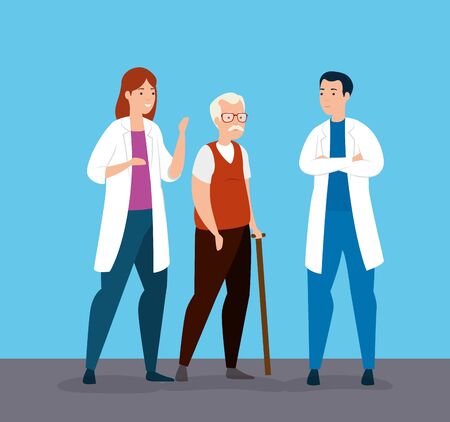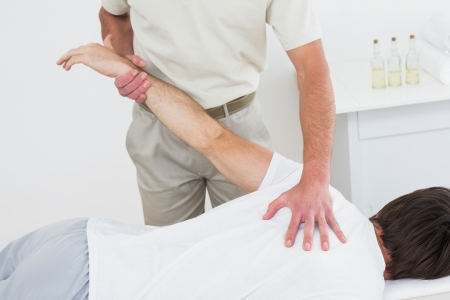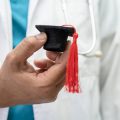Understanding Stroke Recovery in the UK
When it comes to post-stroke physiotherapy, understanding the unique landscape of stroke recovery within the UK is essential for both patients and healthcare professionals. Strokes remain one of the leading causes of adult disability across Britain, with recent figures indicating that over 100,000 people experience a stroke each year in the UK. The two most common types encountered are ischaemic strokes, accounting for nearly 85% of cases, where a blood clot blocks the flow of blood to the brain, and haemorrhagic strokes, which result from bleeding in or around the brain. These medical emergencies do not discriminate by age or background, though prevalence increases with age and certain risk factors such as high blood pressure, atrial fibrillation, and lifestyle choices.
British stroke survivors often face a wide range of challenges during their recovery journey. Physically, individuals may experience weakness or paralysis on one side of the body, difficulties with speech (aphasia), swallowing issues (dysphagia), and problems with balance and coordination. Psychologically, adjusting to life after a stroke can involve coping with depression, anxiety, and frustration due to sudden changes in independence. Furthermore, social reintegration—returning to work, driving, or engaging in community life—can present additional obstacles. Access to consistent and specialised rehabilitation services varies across different regions in the UK, sometimes leaving survivors and their families navigating a complex NHS landscape as they seek appropriate support. Recognising these distinctive British challenges sets the stage for exploring best practices and locally tailored approaches in post-stroke physiotherapy.
2. The Role of Physiotherapy in Post-Stroke Rehabilitation
Physiotherapy is at the heart of post-stroke rehabilitation in the UK, woven into clinical pathways as a standard of care from the very early stages following a stroke. The NHS recognises physiotherapy not just as an adjunct but as a core intervention, essential for maximising recovery and supporting independence.
Importance of Physiotherapy in UK Clinical Pathways
Within British healthcare, physiotherapists are integral members of the multidisciplinary team managing stroke survivors. The National Institute for Health and Care Excellence (NICE) guidelines recommend that every stroke patient should have access to specialised physiotherapy as soon as they are medically stable. Early mobilisation—often within 24 hours—is encouraged wherever possible, provided it is clinically safe, to reduce complications such as muscle contractures or deconditioning.
NHS Recommendations for Post-Stroke Rehabilitation
The NHS provides clear recommendations regarding post-stroke care. These include:
| Aspect | NHS Recommendation |
|---|---|
| Timing | Begin physiotherapy as soon as patient is stable (ideally within 24-48 hours) |
| Intensity | Offer at least 45 minutes of physiotherapy five days per week (as tolerated) |
| Setting | Continue physiotherapy across acute, inpatient, and community settings |
| Personalisation | Tailor interventions to individual goals and functional level |
Typical Goals of Physiotherapy Following a Stroke
The primary aim is to help patients regain as much independence as possible, focusing on everyday activities that matter most to them. Common goals include:
- Restoring movement and strength in affected limbs
- Improving balance and coordination to reduce falls risk
- Relearning walking or using mobility aids where necessary
- Enhancing cardiovascular fitness and stamina through graded activity
- Promoting self-care skills like dressing, washing, and eating independently
- Addressing secondary issues such as pain, spasticity, or shoulder subluxation
A Personal Reflection on Practice in the UK Context
From my hands-on experience in British stroke units, I’ve seen how early and sustained physiotherapy transforms outcomes—not just physically but emotionally. Patients value having clear goals aligned with what matters in their daily lives, while families appreciate the coordinated approach fostered by NHS teams. It’s a journey requiring patience and adaptability from both therapist and patient, but with each small win—be it standing unaided or making a cup of tea—the confidence and hope rekindled are palpable.

3. Key Evidence-Based Practices for Stroke Physiotherapy
Overview of Recent Research
Post-stroke physiotherapy in the UK is strongly rooted in evidence-based practice, drawing upon a wealth of research and clinical trials conducted both domestically and internationally. Recent studies highlight the importance of early, intensive, and task-specific rehabilitation to maximise functional recovery after stroke. British researchers have contributed significantly to the understanding of neuroplasticity—the brain’s ability to reorganise itself—emphasising that targeted physiotherapy can foster meaningful improvements even months after the initial event.
NICE Guidelines: Setting the Standard
The National Institute for Health and Care Excellence (NICE) provides comprehensive guidelines for stroke rehabilitation across the UK. These recommendations stress the need for prompt assessment by a multidisciplinary team—including physiotherapists—within 24 hours of hospital admission. Key points from NICE include:
- Individualised goal-setting involving both patients and families
- Regular review and adaptation of therapy plans
- Promotion of independence through activity-based interventions
- Prevention of secondary complications such as contractures or falls
These guidelines are widely adopted in NHS trusts and private clinics, ensuring consistency in care across British settings.
Proven Interventions in British Rehabilitation Settings
British physiotherapists employ a variety of interventions supported by robust evidence. Among these are:
Task-Specific Training
This approach focuses on practising real-world tasks, such as walking, standing up from a chair, or using stairs. Repetitive practice under professional supervision helps reinforce motor patterns and promotes confidence in daily activities.
Constraint-Induced Movement Therapy (CIMT)
CIMT is used particularly for upper limb rehabilitation. Patients are encouraged to use their affected arm by restricting the use of their unaffected side, thereby stimulating neural recovery and improving function over time.
Functional Electrical Stimulation (FES)
FES involves the application of small electrical currents to stimulate muscle contractions, assisting with movement where voluntary control is limited. This technology is becoming increasingly accessible within British clinics and community services.
Balance and Gait Training
Specialist physiotherapists guide patients through exercises that address balance deficits and promote safe ambulation. This often includes treadmill training with body-weight support, which has been shown to enhance walking speed and endurance.
A Holistic Approach
In line with British values of patient-centred care, emotional well-being and family involvement are also prioritised throughout the rehabilitation journey. The integration of psychological support alongside physical interventions is a hallmark of best practice within UK stroke services.
4. Tailoring Physiotherapy to the British Context
When it comes to post-stroke physiotherapy, a one-size-fits-all approach simply doesn’t work—especially within the unique British context. For optimal recovery, adjustments must be made to fit UK-specific resources, home environments, public health services, and community support networks. In this section, I’ll share practical insights from working within the NHS and local communities, highlighting what truly makes physiotherapy effective for stroke survivors across Britain.
Making Use of UK Resources
Britain offers a wealth of public health resources—from the NHS’s structured rehabilitation pathways to charity-led initiatives like Stroke Association support groups. The key is knowing how to navigate these systems efficiently. Physiotherapists often act as coordinators, ensuring patients access specialist clinics, mobility aids via occupational therapy, or telehealth sessions when in-person visits are challenging.
Home Environments: British Realities
British homes, whether Victorian terraces or modern flats, pose their own challenges. Narrow staircases, small bathrooms, and multi-storey layouts mean exercises and adaptations must be realistic for these spaces. Therapists work closely with patients (and sometimes local councils) to arrange minor modifications such as grab rails or ramps. Here’s a quick comparison:
| Feature | Typical British Home | Physiotherapy Adjustment |
|---|---|---|
| Stairs | Narrow/steep | Focus on step training, safe techniques for ascending/descending |
| Bathrooms | Compact layouts | Emphasis on balance for transfers; recommend foldable shower chairs |
| Living Space | Limited open space | Adapt exercises for smaller areas; use furniture for support |
Navigating Public Health Services
The NHS provides comprehensive but sometimes stretched services. Patients may face waiting lists for specialist therapy or equipment provision. As a result, physiotherapists often teach families essential exercises and self-management strategies to bridge any gaps until more formal support becomes available.
The Power of Community Support Networks
Community spirit runs deep in the UK, with many local charities and volunteer groups offering befriending services, peer support meetings, and adapted sports clubs. Linking stroke survivors with these networks not only improves motivation but also helps reduce isolation—a major barrier to recovery.
Summary Table: Tailoring Strategies in the UK
| Area of Focus | UK-Specific Approach |
|---|---|
| Accessing Care | NHS pathways, local stroke teams, telehealth options |
| Adapting Homes | Council-funded modifications, practical exercise adaptations |
| Ongoing Support | Charity partnerships, community activity groups, peer mentoring |
In summary, effective post-stroke physiotherapy in Britain means adapting best practices to local realities—making clever use of what’s available and always keeping patients’ lived environments and social supports at the heart of every care plan.
5. Integrating Multidisciplinary Teams and Family Involvement
One of the hallmarks of post-stroke physiotherapy in the UK is its commitment to a multidisciplinary team (MDT) approach. In British stroke care, coordination between physiotherapists, occupational therapists, and speech and language therapists is not just encouraged—it’s considered best practice. These teams work collaboratively from the acute hospital phase through community-based rehabilitation, ensuring that every aspect of a patient’s recovery is addressed holistically.
The Structure of British MDTs
Within the NHS framework, regular MDT meetings are standard procedure. Each specialist brings their unique expertise: physiotherapists address mobility and strength; occupational therapists focus on daily living skills and adaptive strategies; speech therapists manage communication or swallowing difficulties. This integrated model enables professionals to share observations, set unified goals, and avoid fragmented care—a common pitfall when services operate in silos.
Family Engagement as a Cornerstone
British best practices recognise that successful rehabilitation extends beyond clinical settings. Families are seen as vital partners in the recovery journey. From the outset, relatives are invited to goal-setting discussions, therapy sessions, and progress reviews. MDTs provide family members with practical training—such as safe transfer techniques or communication strategies—so they can confidently support their loved one at home. This empowerment reduces anxiety for both patients and carers while promoting continuity of care.
Community-Based Support Networks
The UK also boasts a strong network of community stroke teams who continue MDT-led rehabilitation at home or in local clinics after hospital discharge. This seamless transition is supported by clear communication channels between acute and community teams, often facilitated by digital health records or structured handover meetings. Crucially, British services signpost families to charities like the Stroke Association, which offer peer support groups, helplines, and educational workshops—further reinforcing the collaborative ethos underpinning post-stroke rehabilitation in Britain.
6. Challenges and Innovations in British Stroke Rehabilitation
When it comes to post-stroke physiotherapy in the UK, several challenges persist that require both practical solutions and fresh thinking.
Common Barriers in UK Physiotherapy
Many stroke survivors face hurdles such as long NHS waiting lists, limited access to specialist physiotherapists, and variable continuity of care between hospital discharge and community services. These obstacles often lead to delays in starting rehabilitation or reduced therapy intensity, which can impact recovery outcomes.
Regional Resource Differences
The availability of stroke rehabilitation services varies significantly across Britain. Urban centres like London or Manchester may offer a wider range of multidisciplinary teams and intensive therapy options, while rural areas sometimes struggle with fewer therapists per capita and longer travel distances for home visits. This regional disparity highlights the importance of local advocacy and community-based initiatives to bridge service gaps.
Use of Technology in Rehabilitation
Technology is increasingly being harnessed to overcome some of these barriers. In many clinics, digital tools such as mobile apps, wearable devices, and motion sensors are now used to track patients’ progress and motivate daily exercise. These innovations help personalise treatment plans and provide real-time feedback, empowering patients to take an active role in their recovery.
Emerging Practices: Tele-rehabilitation
One of the most significant shifts in recent years has been the rise of tele-rehabilitation, particularly accelerated by the COVID-19 pandemic. Through video consultations, online exercise classes, and virtual support groups, patients can receive professional guidance from home—ideal for those with mobility challenges or living far from major centres. While not a complete replacement for hands-on therapy, tele-rehabilitation offers a flexible supplement that’s helping address regional inequalities.
Looking Ahead
Innovations like hybrid care models—combining in-person sessions with digital support—are gathering momentum across Britain. As stroke survivors share their own journeys and practitioners adapt best practices to local needs, the landscape of post-stroke physiotherapy continues to evolve, balancing traditional expertise with modern technology for more equitable and effective care.


